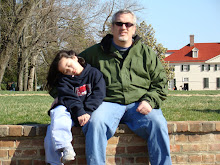By Carl S. Smith.
Published by University of Chicago, August 2007.
202 pages.
I looked forward to reading this as I greatly enjoy history, architecture and learning about Chicago. The book certainly has some of that and had some interesting parts, but I found a large portion to be kind of dry. I could recommend parts of this book for reading if it was fresher in mind. I haven't read it for about a month now.
What I do remember that was interesting were the sections about antecedents for city planning. Paris was one example discussed and Burnham worked in several American cities previous to making his great plan in Chicago.
Some of the discussion about Chicago in the 19th century was interesting as it illuminated many of the problems that Chicago had at that time - filth, squalor, chaos. And the book also discussed the solution that the plan suggested for these problems.
And finally some of the comparisons that were made between Chicago prior to the publishing of the plan, the plan itself and contemporary Chicago were very interesting. It was very interesting, but I feel there could have been more. The author even states that to do all that comparing would be a very difficult task. I think it would have been worth the effort. This was the book I was expecting.
The book falls flat for the rest of it. This book is more about the plan itself then Chicago history. It spends quite a lot of time discussing the organization of the groups that supported it - The Merchants Club and The Commercial Club of Chicago, which Burnham and Bennet (his partner) were a part of. These were groups of wealthy , conservative and influential men and some famous names do crop up such as Wacker (got his own street). It's no wonder they got most of their ideas passed since they had all this influence (including some shady aldermen and mayors). I think this influence was essential to the plan becoming realized.
The book discussed who was responsible for what part of the production of the plan. And that's the thing, the book talks a lot about the production of the plan. How it was printed and bound for example. Or how it was marketed to the public (it was part of the Junior High curriculum in Chicago). Or the description of the fancy, high fallutin' special editions. As you can see, much of this, while it did have some interesting tidbits, were not about city planning, or architecture.
There were some dissenters to the plan, though most people supported it then and now. The book only mentions these dissents in passing and does not give much sway to their arguments.
One problem was that the monumental size of the project was dehumanizing. Some of the drawings seem futuristic and sterile. There are no people to be seen in the streets of these drawings.
Another criticism of the plan was that it was centered on the lake front and did not address issues in the surrounding, and often squalid neighborhoods. The hope of the plan was to unite everyone, rich and poor etc., to marvel at the wondrous awesomeness of the city. That smacks a little of propaganda in which the masses should all come together for the sake of good (ie. a war or in this case the pride of Chicago). Look at how people now unflinchingly support government policies out of patriotism, even if it means their sons and daughters are dying in wars overseas.
Though like I said, the title is about the plan of Chicago and not necessarily so much about the city itself. So the book does not falsely advertise it's contents. It delivered what it said it would. I was just a little less interested in the content that it delivered.
Here's some pictures and more information in the following videos.
Sunday, November 15, 2009
Subscribe to:
Comments (Atom)



